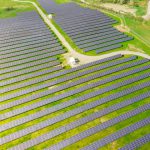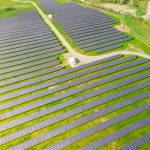
How amazing would it be if solar-powered microbes can feed the world? It sounds like sci-fi, but it is based on grounded research. Scientists have demonstrated (at the laboratory scale) how a protein derived from microbes is rich in nutrients. Plus, the process of manufacturing requires only a fraction of the resources required by conventional farming.
Microorganisms at the Core of Food Tech Innovation
A lot of research around food tech is done by the industry to find innovative solutions. In this regard, research from Betway online casino highlights how food tech innovation can play a critical role in the next 30 years. One of the highlights is microorganisms taking centre stage. So, microorganisms such as fungi, bacteria, yeast, seaweed, and microalgae, can provide rich protein sources.
Why should one consider expanding the use of microbial food? Among many reasons, it can help to alleviate the world and the issue of poverty. Furthermore, 30-40 percent of the land on the earth is used for farming. However, at the same time, one in ten people are undernourished. So, looking at solar-powered microbes as a food source to deal with global hunger can be an innovative trend to look out for in many parts of the world.
Microorganisms Facilitating Food Production
Moreover, the use of microorganisms to help produce food isn’t new. The production of beer and cheese are good examples. Plus, the use of mycoprotein for creating vegetarian food has been with us for several decades.
Use of Solar Panels in Microbial Production
In this context, the new development from the University of Göttingen on the use of solar panels to create a more sustainable, efficient, and environmentally friendly microbial production plant is pertinent. The scientists highlight a newly developed method that uses solar energy, land, nutrients, and carbon dioxide from the air.
Furthermore, the effectiveness of such technology has been modelled in the laboratory, centred around computer simulations to assess how protein-rich biomass can be grown, harvested, and processed. Different microorganisms were modelled, with different organisms presenting varying levels of energy usage.
For the researchers, outlining the environmental measures of the process are critical. To demonstrate this, the scientists performed a series of equations required to set out the inputs of electricity generation (from solar panels). Plus, it sets out electrochemical production of substrate that is energy-rich for the microbes, microbe harvesting, cultivation, and processing the protein-rich biomass.
The research work is published in the Proceedings of the National Academy of Sciences journal.




